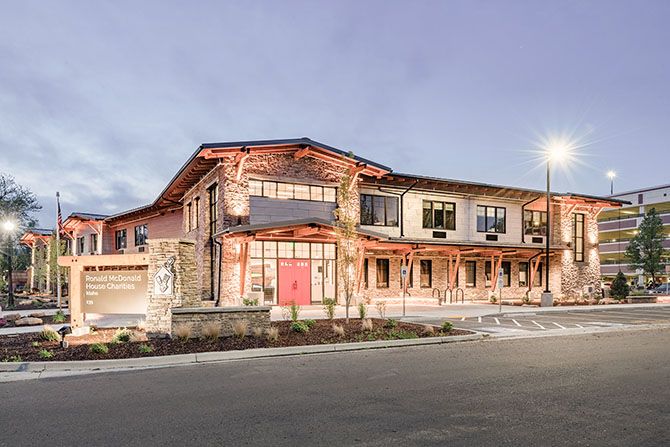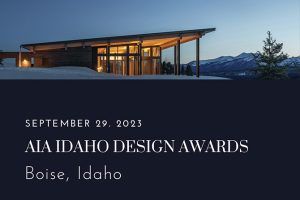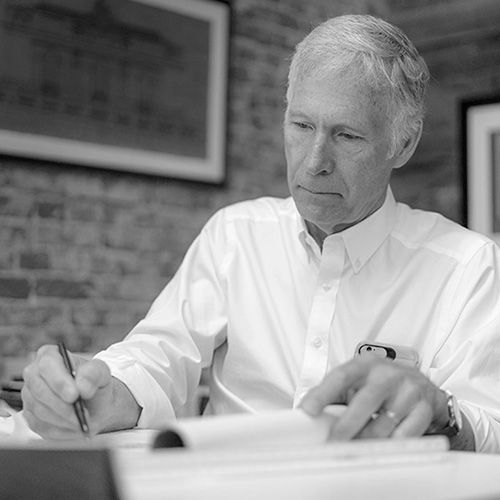
Since establishing COLE Architects in 1995, Stan hasn’t spent much time sitting still. Over his 40 years in architecture, he has attained licensure in 13 states and his designs have won many local and regional awards. He is the past President of the Idaho Central Chapter of the American Institute of Architects and a past board member of Idaho’s architectural licensing board. He has also contributed to civic organizations such as the Boys & Girls Clubs of Ada County, Urban Land Institute, Ronald McDonald House, and BOMA.
We had the chance to sit down with Stan to learn more about him and his amazing career. We enjoyed getting to know him and hope you will too.
When and why did you decide to become an architect?
As a child, I always dabbled with floor plans, and I grew up on a farm where I could build lavish play structures (forts). I loved art and sketching. I didn’t make the conscious effort to pursue architecture until my second year in college. Through a friend, I was introduced to an architecture student studying at Washington State University. I was fascinated with the models, drawings and the combination of technology and art. It looked like a fascinating profession.
What is your favorite architectural style?
Modern and/or Prairie style — design that integrates the landscape into the
overall character.
Did any architect, in particular, inspire you?
Frank Lloyd Wright. In our fourth year of architecture school, we took a field trip to Chicago, and we toured the Frederick C. Robie House, Johnson Wax Headquarters, and the Unitarian Meeting House that Frank Lloyd Wright had designed. I have since toured and studied many of Frank Lloyd Wright’s buildings, including Fallingwater, Kentuck Knob, Teater’s Knoll and a traveling exhibit of Usonian home.
Tell us about your university education.
I attended Washington State University to obtain my Bachelor of Architecture degree. Our design studios were based on modern design influences, but not on specific architects. We were exposed to means and methods to develop functional designs based on specific program requirements. My educational experience was enhanced by doing drafting and designing for contractors during summer breaks.
Who were your mentors?
Upon graduation, I moved to Seattle to work. Richard Lawson of Richard Lawson Architects was my best mentor. Rich was instrumental in allowing me to gain a well-rounded architectural experience in design, project management and construction administration. It was a small architectural practice with a very hands-on approach.
Tell us about your journey of starting a firm.
I have always wanted to have my own firm — I envisioned the freedom to make my own destiny. My wife and I moved to Boise in 1990 when Boise was still a young, growing, small, urban area. Prior to starting my firm, I designed homes for a custom home builder and was a project manager for the State of Idaho Division of Public Works and a medium-sized architectural firm. The relationships I developed working for a diversity of entities provided me with my first clients.
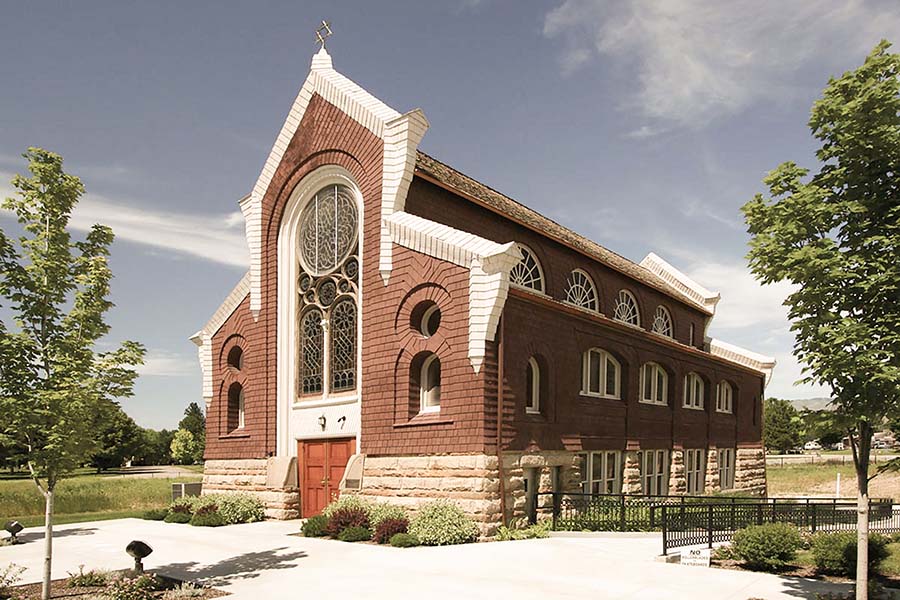
Photos courtesy of COLE Architects

How has your career evolved over the years?
I have always tried to use technology to stay ahead of the curve. When I initially started the firm, a conscious decision was made to use computer software and hardware — so all of our staff had to be computer literate. We were one of the first firms in Idaho to have a webpage. Our firm was one of the first to embrace sustainability in our designs, and our office, in 2004, was one of the first privately funded, sustainably designed and built projects.
What career accomplishment are you proudest of?
I am most proud that, as I go into retirement, the firm will continue to grow and flourish. I have been lucky to find individuals who are committed to the same philosophy that I based the firm on. Our firm has always been heavily involved in community-based, non-profit organizations. Over the years, we have provided pro bono services to the Black History Museum, Boys and Girls Clubs and Ronald McDonald House. All of these organizations are critical to our community and who we are.
How do you feel about the evolution of the architectural industry during your career as an architect?
When I graduated from college, we were still using a T-square and drafting on mylar or vellum sheets. Today, we are using BIMs (building information modeling) that allow us to use computer technology to build computer modeling in real time. The technology is continuing to evolve and change, including AR/VR-augmented reality/virtual reality and 3D printing.
What was one of the most rewarding projects you worked on?
Ahavath Beth Israel Synagogue was extremely rewarding. I was able to learn and understand about a history and culture that I wasn’t familiar with. The historic Synagogue is the oldest Jewish Synagogue West of the Mississippi and was moved up to the Boise bench and restored. We added a campus of buildings around the historic synagogue as a symbolic gesture of hands surrounding and keeping the historic synagogue safe — “in good hands.” We found a time capsule in the stone foundation during the move which included the names of the original supporters, including Levi Strauss.
What do you see as the biggest challenge for Idaho architects today?
Idaho architects are somewhat isolated by our geography. We need to constantly re-educate ourselves by traveling and seeking out additional education opportunities. Traveling will help expose ourselves to new methods of design, technology, materials. Education will assist in keeping architects updated on design trends, technology, materials and methods and life safety and code compliance issues.
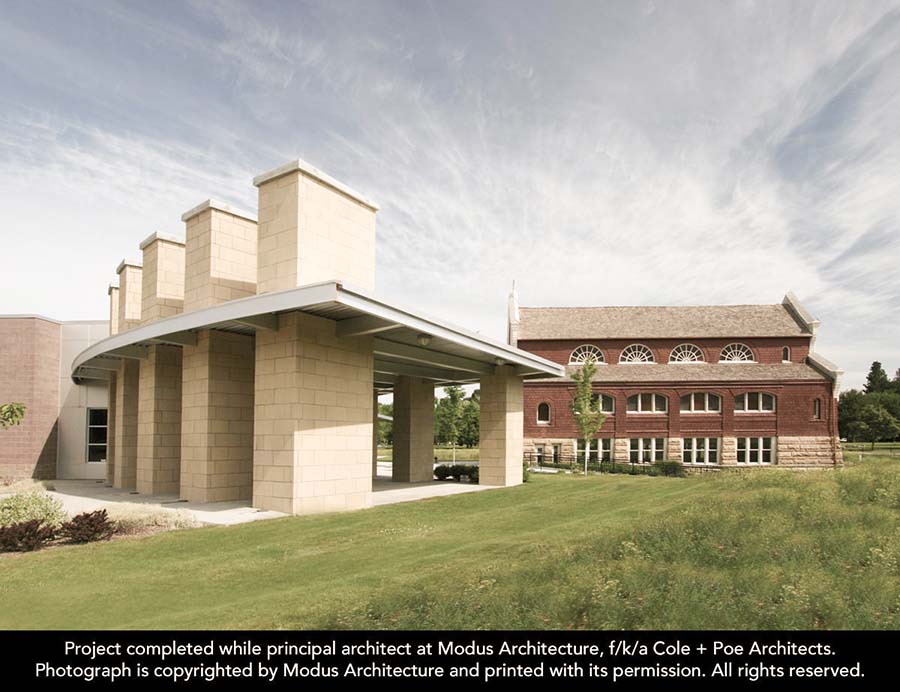
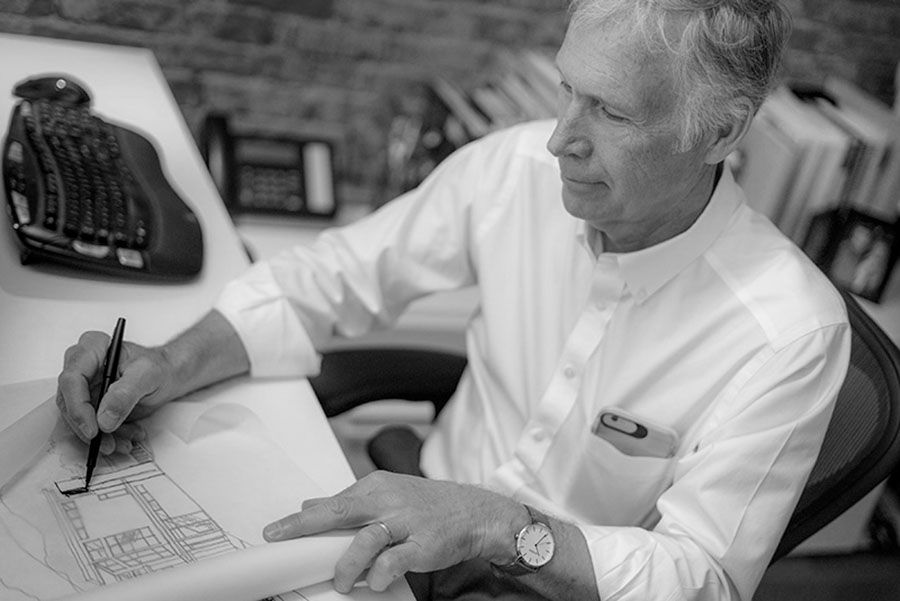
Photos courtesy of COLE Architects
What can Idaho do to try to manage growth?
This is a very intriguing and complicated question and involves many intertwined elements of culture and politics. Some of the elements of managed growth involve mass transit/high-medium density housing/growth boundaries. Idaho is unique in that the state is relatively low in population density, except for Treasure Valley. This creates the complexity of educating our legislators who are, for the most part, from smaller rural areas which are not experiencing the rapid growth Treasure Valley is.
As architects, we need to be involved with the decision-making process in our local and state governments. We need to educate the public about how good design will enhance not only the built environment, but also how people can effectively connect and interact with buildings and public spaces. Housing density and mass transportation need to be integrated into every discussion and how everyone can benefit from long-range transportation and properly planned building development.
What can architects do to address affordable housing in Idaho?
Architects need to be the leaders and catalysts for affordable housing. As architects, we need to assist our clients with education and development opportunities that include workforce housing. As Boise and Idaho grow, this will be an ongoing battle to overcome.
Final thoughts to pass on to up-and-coming architects?
For young architects, I would submit this: the architectural profession is an extremely challenging but highly rewarding career. Architecture is a fast-paced, deadline-driven profession. Architecture is not only the design of buildings but also the integration of structural, mechanical and electrical engineering and technology required to make the project functional. Architecture requires a team of talented architects, creative and knowledgeable consultants, and forward-thinking clients, all working together toward a common goal. You need to be a collaborator to be successful.
Any last thoughts?
I feel blessed to have had a fun and rewarding career in architecture. What other profession can you leave a physical reminder (building), and hopefully a positive impact on your community? The architecture profession also provided me the opportunity to develop long-lasting relationships and friendships with my colleagues and clients.



